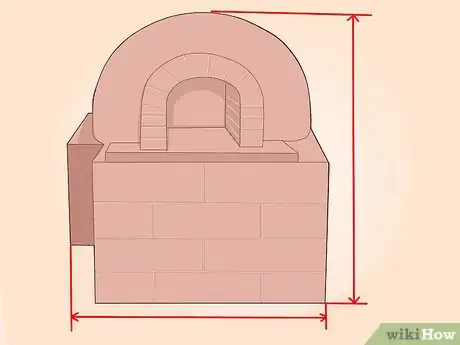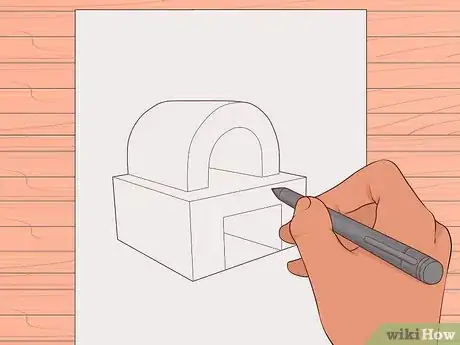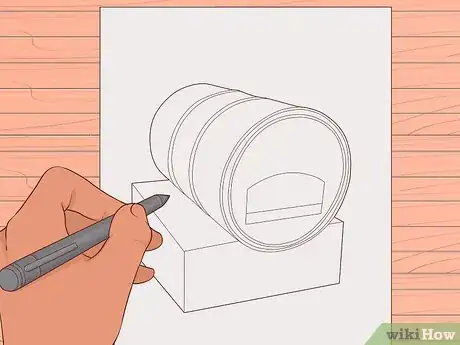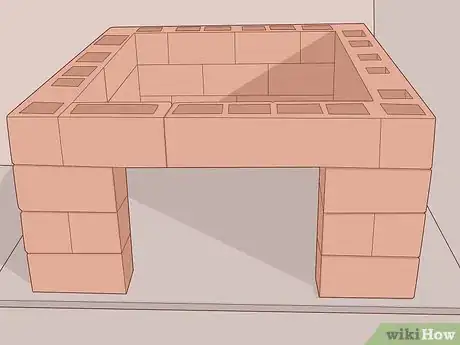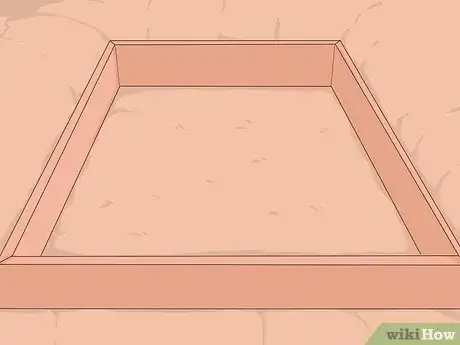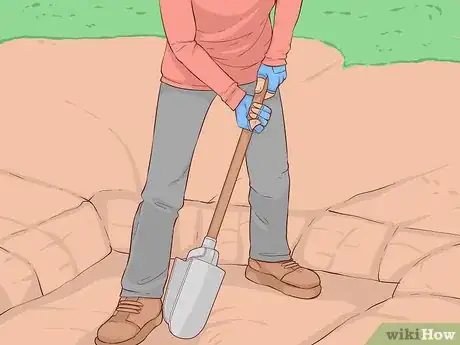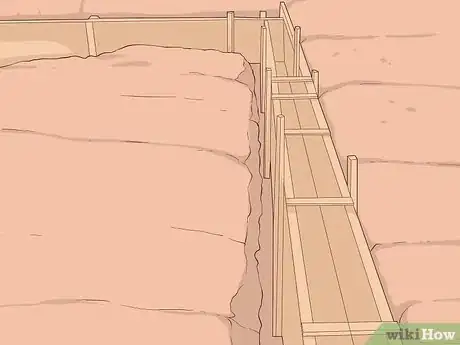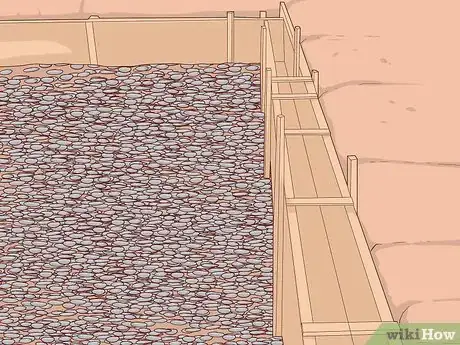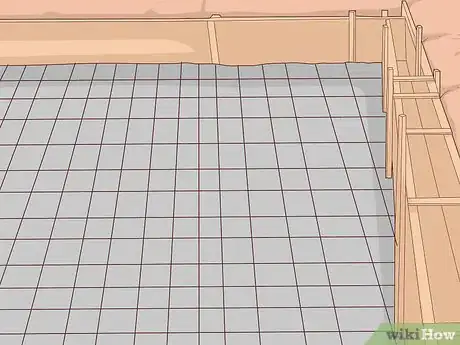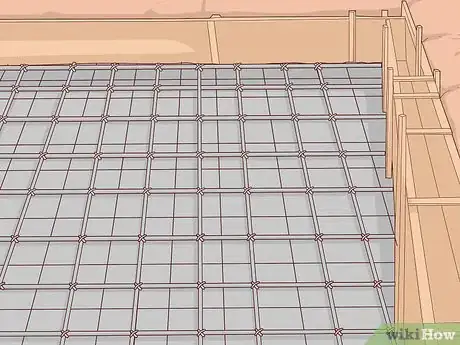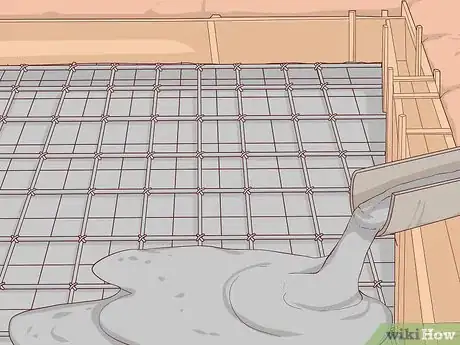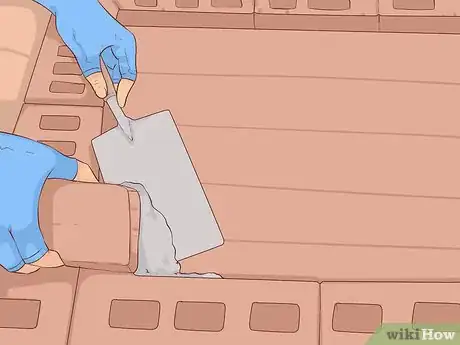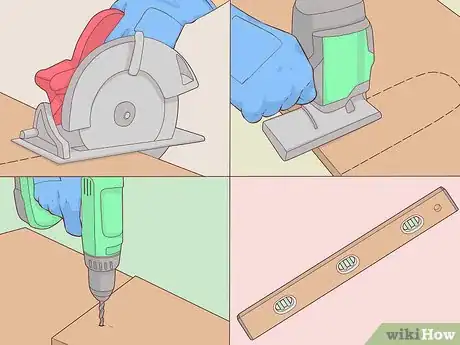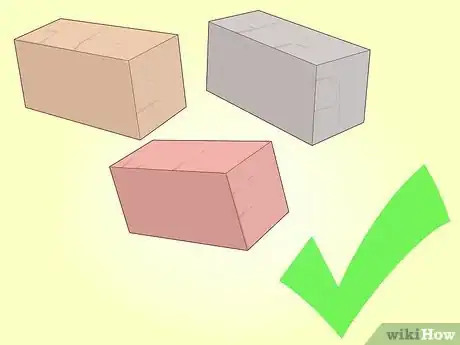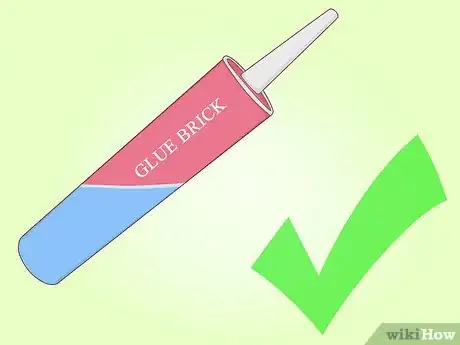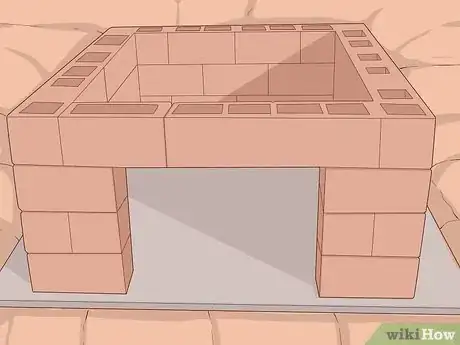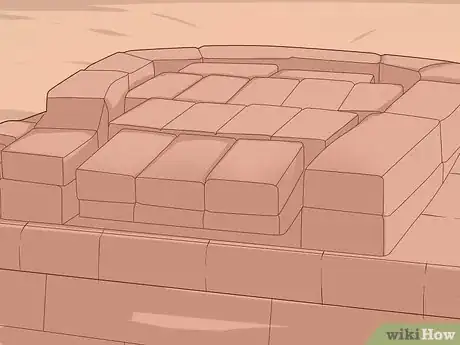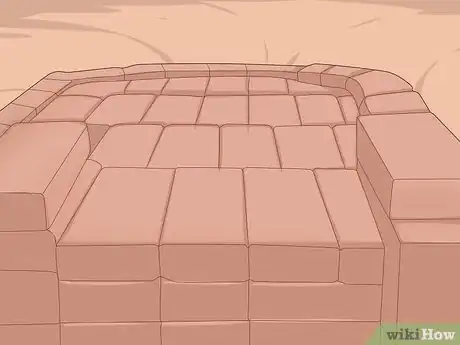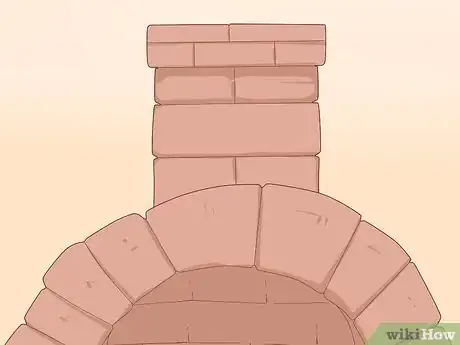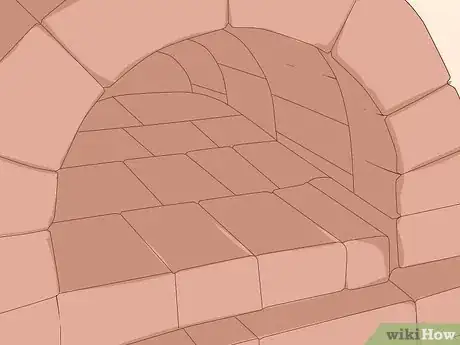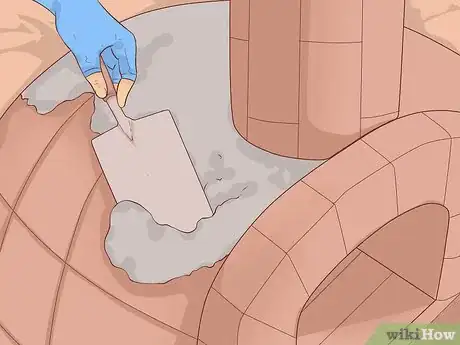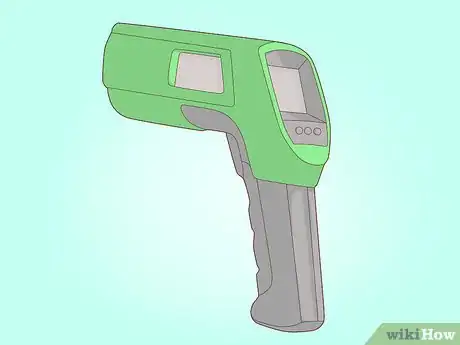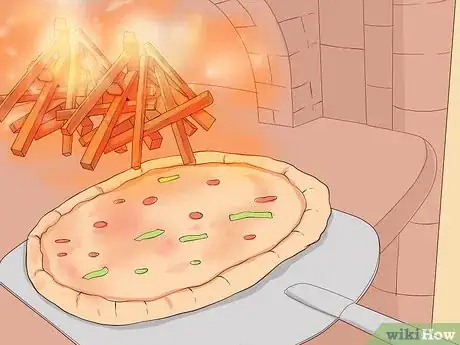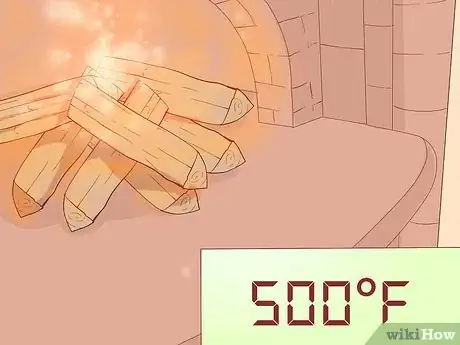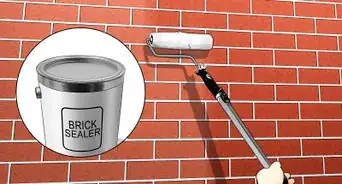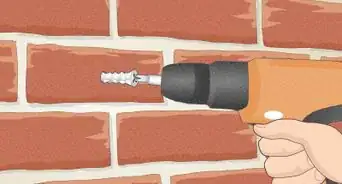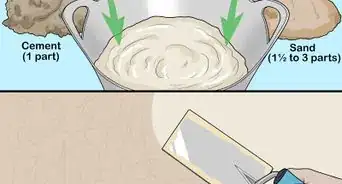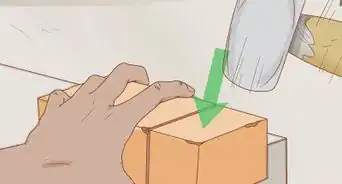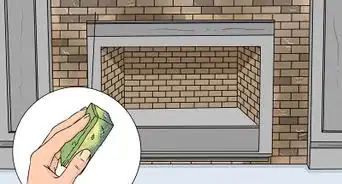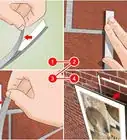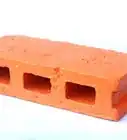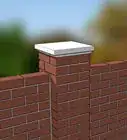This article was co-authored by wikiHow Staff. Our trained team of editors and researchers validate articles for accuracy and comprehensiveness. wikiHow's Content Management Team carefully monitors the work from our editorial staff to ensure that each article is backed by trusted research and meets our high quality standards.
There are 17 references cited in this article, which can be found at the bottom of the page.
This article has been viewed 326,320 times.
Learn more...
Building a brick oven can be a time-intensive and expensive home project. However, it’s well worth it for the delicious food and cheerful hearth. First, find a brick oven plan that fits within your size and budget limits. Next, prepare a foundation for your brick oven by digging a hole and filling it with concrete. After your foundation has cured, begin constructing your brick oven. Follow your plan when gathering materials and laying the bricks. Last, use your brick oven to bake pizzas, bread, and other delicious dishes.
Steps
Choosing a Plan
-
1Find brick oven plans. Brick ovens are time-consuming, expensive projects. If you build the oven incorrectly, it might crack and undo all of your hard work. If you want to build the oven properly, you need to follow a plan. Brick oven plans can be found online or purchased from your local home improvement store. Some great plans include:
- Forno Bravo’s free brick oven plan (https://www.fornobravo.com/pompeii-oven/brick-oven-table-of-contents/)
- Makezine’s free brick oven plan (http://makezine.com/projects/quickly-construct-wood-fired-pizza-oven/)
- Purchase oven plans from EarthStone ovens (http://earthstoneovens.com/)
-
2Consider the size of your oven. The plan you choose will depend on how much space you can dedicate to your oven. For example, if you have a small garden, you will need to build an oven that will fit inside of it. Other considerations include:
- If you’re building the oven under a patio cover, the oven should be short enough to fit underneath it. However, make sure the chimney can stick out from underneath the patio cover to release the smoke.
- If you want to cook large pizzas, the floor of the oven must be large as well.
- Budget limitations should be taken into consideration. If you have a small budget, plan to build a smaller oven.
Advertisement -
3Choose a dome oven plan. Dome ovens are igloo-shaped brick ovens with wooden doors. They have an easy, rustic elegance that can add a lot of visual interest to your backyard. Additionally, these ovens will cook food evenly and can be heated to very high temperatures.[1]
- Dome ovens can be difficult to build. Some plans even involve woodworking.
- These ovens can take a lot of time to heat up properly.
-
4Consider a barrel oven plan. Barrel ovens are brick ovens that are built around a large metal barrel. These ovens can be heated up very quickly and are more energy efficient than some dome ovens. This oven type is an excellent choice for hobbyists who want to be able to cook foods quickly.[2]
- These ovens are usually sold in kits that include a firebox and a large metal barrel.
- These kits usually have to be purchased online and can be expensive to ship.
Building a Foundation
-
1Plan your foundation. Most brick oven plans will include instructions for a concrete foundation. The concrete base will bear the weight of the brick oven, keeping it level for many years. The foundation slab should be at least as big as the brick oven. However, if you make it bigger, you can also create a patio or sitting area next to your brick oven.
- If you make a larger patio area, you will need more materials and the foundation will take more time to build.
-
2Build a foundation form. The instructions for this form will be included in the brick oven plan. Follow the instructions to create a wooden form. This form will be placed in the ground and filled with concrete to create the concrete foundation.
- Use a spirit level to make sure the form is perfectly level. The more level the form is, the more level your foundation will be.[3]
-
3Dig an area for your foundation. Measure out the foundation for your brick oven, using small flags or chalk dust to mark the edges. Next, clear away any large rocks or debris before using a tiller to excavate the dirt. Most foundation plans ask you to dig 10 inches (25.5 centimeters) deep into the ground. Tillers can be rented or purchased at home and garden stores. When using a tiller:
- Follow the manufacturer instructions.
- Avoid digging too deep too quickly. Only excavate about an inch at a time.
- Water the area a few hours before tilling to loosen up the soil.
-
4Install the foundation form. Once the hole has been excavated, place the foundation form in the hole. Press the sides firmly to force them into the soil. If you have trouble installing the foundation form, you may need to dig some dirt away from the sides. Once the form is installed, fill in any empty spaces along the outside with dirt.
-
5Lay some gravel. Pour a layer of pea gravel or crushed rock into your excavated hole. Keep adding gravel until the layer is about 3 inches (7.5 centimeters) deep. Next, use a tamper (a tool with an upright handle and a square metal plate on the bottom) to tightly compact the gravel. Tampers can be rented or purchased from your local gardening or home improvement store.
- If you don’t have a tamper, you can use your foot to compact the gravel. However, it won’t be compacted as well.
-
6Lay down wire mesh. Cover the gravel with a layer of wire mesh. If needed, use strong wire cutters to trim or shape the wire mesh. You can put 6-mil polyethylene sheeting over the gravel, but under the wire to stop water from wicking up (absorbing water) from the ground into the slab. It's even better to put some Xypex (a water-proofing chemical) into the concrete while you are mixing it. Xypex is not expensive, and will help keep your reinforcing wire or rebar from corroding. Corrosion causes the metal to swell, cracking your slab eventually. [4]
- Wire mesh can be purchased at your local home improvement store or online.
-
7Install a rebar grid. Installing rebar will help strengthen and stabilize the concrete foundation. Refer to your brick oven plan to see how much rebar you need to use. Usually, you will install the rebar into the sides of the foundation form and use wire to connect overlapping sections of rebar.[5]
- Some people think that installing rebar is unnecessary and skip this step. However, without the rebar, your concrete base may crack after a few years of use. Most small slabs are poured without rebar, but with wire mesh to strengthen them. Rebar or wire mesh should be propped up off the gravel base using pieces of stone or brick, so that it becomes embedded in the concrete.
-
8Pour some concrete. Mix a batch of concrete (adding the recommended amount of Xypex) and pour it into your foundation form, completely submerging the rebar grid, which should be held up off the gravel base by pieces of brick or stone, not wood. Once the form is completely filled, use a straight piece of wood, such as a 2x4, to level off the top (this is called "screeding".) Let the slab cure for a few days before continuing to build your brick oven.[6]
- The amount of concrete you need will vary based on the size of your foundation. Refer to your brick oven plan for more information.
- Mixers and other concrete pouring equipment can be rented at your local home improvement store.
Using the Plan
-
1Follow your plan exactly. It’s easy make mistakes when building a brick oven. These mistakes can lead to cracking, collapsing, or bad insulation. If you follow your plan, you will avoid making these mistakes. Resist the urge to cut corners or improvise. If you do, you may undo all of your hard work.
-
2Understand basic woodworking techniques. Your plan may ask you to build wooden templates. If so, you will need to know how to use basic woodworking tools. Some basic tools include:
- A circular saw, to cut straight pieces of wood
- A jigsaw, for cutting shapes in wood
- A power drill, to drive screws into pieces of wood
- A level
-
3Use the correct types of brick. Your plan will ask for several different kinds of bricks. It may be tempting to ignore their recommendations and use the cheapest or most readily available bricks. However, each brick type has an important function that will extend the life of your oven. For example:
- Firebricks are used to line the interior of the oven. These bricks resist crumbling caused by heat and can withstand high temperatures.
- Red clay bricks are usually used on the exterior of the oven. These bricks help insulate the firebricks and are somewhat heat resistant as well. [7]
- Other brick types, such as concrete blocks, may be used for the base of the oven. These are chosen for their durability and stability.
-
4Use the proper mortar. Usually, when you build a structure from brick, you use a concrete mixture to hold the bricks together. However, if you use this to connect the bricks in your oven, the concrete may cause the bricks to crack as they expand from the heat. Instead, use a mixture of clay and sand to cement your bricks together. This mixture will expand and contract at the same rate as the bricks.
- Follow the ratios in your brick oven plan. Usually, the plan will ask you to mix six parts of clay to four parts of sand.[8]
- For advice on bricklaying, talk to a representative from your local home improvement store. They can direct you towards the proper tools and equipment.
Constructing the Brick Oven
-
1Build an oven stand. Use concrete blocks to create a stand for your oven. Lay the first layer down in a square shape with an opening at the front. Use a level to make sure that the layer is even. Continue laying concrete bricks until the oven stand is about waist-high.
- Once the concrete blocks have been stacked, fill every other core with concrete to cement everything together.[9]
- The space inside the oven stand can be used to store firewood.
-
2Construct a hearth. Create a wooden concrete form in the shape of your hearth. Next, place the wooden form on the oven stand and fill it with concrete. Use a long, straight piece of wood to level off the concrete and let it dry for a few days.
- Install a rebar grid into the wooden form before pouring the concrete for additional support.[10]
-
3Line the hearth with firebricks. Set a layer of firebricks using the intended shape of the oven as a guide. Connect them with a thin paste made of one part sand and one part fire clay. Add water until the mixture becomes a thick slurry.[11]
- Avoid the temptation to use mortar to connect the firebricks. Mortar won’t expand and contract with the bricks and will eventually crack them.
-
4Create the oven dome. Lay down firebricks in a circular shape to create the walls of the oven. As you build, slowly angle the layers inwards to create a dome shape. You may need to cut the bricks into smaller pieces using a tile saw.[12]
- Let the sand and clay paste dry on each layer before continuing.
- Leave a space open near the back of the dome. This will allow the smoke to vent into a chimney.
-
5Build a chimney. Surround the opening at the back of the dome with a layer of firebricks. Stack the bricks in a square shape to create a tall chimney. The smoke inside the oven will vent out of the space in the back and the chimney will direct it into the air.[13]
- You can also create a chimney base with the firebricks and then purchase a tall, metal chimney flute. Attach the flute with mortar.
-
6Create the oven entrance. Use red clay bricks to create an oven entrance. This is where you will add firewood and insert food. Traditionally, brick oven entrances are built into an arch shape. However, you can also make a square shaped entrance if you’d like.[14]
- Use mortar to connect the red clay bricks.
- You can create an oven door out of wood or simply use loose bricks to block it off when necessary. Keep in mind that closing off your fire during use will cut off oxygen and cool the oven, or even extinguish it.
-
7Cover the oven with insulation. Cover the entire oven with a thick layer of vermiculite-based insulating concrete.[15] Let the concrete insulation dry according to the manufacturer instructions. Once it’s dry, add a layer of red clay bricks around the oven to give it a traditional appearance.
Using the Oven
-
1Review your brick oven plan. Your oven plan will tell you where and how to build a fire inside your brick oven. Make sure you thoroughly understand the process before you try to build a fire. If you try to cook without reading the instructions, you may burn or undercook your food.
-
2Purchase an infrared thermometer. Different foods require different cooking temperatures. Seasoned brick oven experts can tell what temperature an oven is by looking into it. However, if you’re unexperienced, you need to purchase an infrared thermometer. This tool can be pricy, but it’s an important investment in your cooking experience.[16]
- Follow the manufacturer instructions when using an infrared thermometer.
-
3Cook pizzas. Make delicious pizzas in your brick oven using the Fire-in-the-Oven method. First, build a large fire in your brick oven. Let the fire build until the flames are licking the top of the oven. Next, push the fire to the back of the oven to clear a space for your pizza.[17] Lay your pizza directly on the brick and cook it with the oven open for 1 to 3 minutes.[18]
- The oven needs to be 650 to 700 degrees Fahrenheit (343-371 degrees Celsius) to properly cook a pizza.
- You may need to add more wood every 15-20 minutes to maintain the flame.
-
4Make a roast overnight. Add wood to your oven and create a large, slow-burning fire. Once the oven has reached 500 degrees Fahrenheit (260 degrees Celsius,) your oven is ready for a roast. First, carefully rake out the coals onto the ground, killing the fire. Next, place the roast in the oven and close the door. The residual heat from the fire will slowly cook the roast overnight.[19]
- This method works best with larger cuts of meat.
- The roast should be in a pan and wrapped with foil.
-
5Bake conventional dishes. You can use your oven to bake at temperatures below 500 degrees Fahrenheit (260 degrees Celsius.) First, build a fire in your oven. Once it reaches the right temperature, rake out the coals to kill the fire. Place your dish in the oven and close the door. The residual heat in the oven will cook the food.[20]
- This method works well for bread, desserts, beans, and pasta dishes. Bread can be placed directly on the brick while other dishes should be cooked in an oven safe pan.
Community Q&A
-
QuestionWhat about a chimney?
 Community AnswerMost plans include a chimney to release the smoke.
Community AnswerMost plans include a chimney to release the smoke. -
QuestionShould I build an enclosed dome and then cut an opening, or should I form an opening when layering the clay?
 Community AnswerEither way could work, but forming an opening when layering the clay may be easier and less work.
Community AnswerEither way could work, but forming an opening when layering the clay may be easier and less work.
References
- ↑ https://www.fornobravo.com/pompeii-oven/starting-the-oven-dome/
- ↑ http://slice.seriouseats.com/archives/2011/10/slice-over-a-barrel.html
- ↑ http://myoutdoorplans.com/pizza-oven/outdoor-pizza-oven-plans-2/
- ↑ https://www.fornobravo.com/pompeii-oven/foundation-slab/
- ↑ http://www.familyhandyman.com/masonry/pouring-concrete/form-and-pour-a-concrete-slab/view-all
- ↑ http://www.familyhandyman.com/masonry/pouring-concrete/form-and-pour-a-concrete-slab/view-all
- ↑ https://www.fornobravo.com/pompeii-oven/brick-primer/
- ↑ http://myoutdoorplans.com/pizza-oven/outdoor-pizza-oven-plans-2/
- ↑ https://www.fornobravo.com/pompeii-oven/concrete-block-stand/
- ↑ https://www.fornobravo.com/pompeii-oven/insulating-hearth/
- ↑ https://www.fornobravo.com/brick-oven-cooking/cooking-surface/
- ↑ https://www.fornobravo.com/pompeii-oven/starting-the-oven-dome/
- ↑ https://www.fornobravo.com/pompeii-oven/chimney/
- ↑ https://www.fornobravo.com/pompeii-oven/oven-vent/
- ↑ https://www.fornobravo.com/pompeii-oven/oven-insulation/
- ↑ http://blog2.thermoworks.com/2016/08/pizza-ovens-thermal-powerhouses/
- ↑ https://www.fornobravo.com/brick-oven-cooking/brick-oven-cooking-techniques/
- ↑ http://www.traditionaloven.com/cooking.html
- ↑ http://www.ozarkdreams.com/cooking-roasting.htm
- ↑ https://www.fornobravo.com/brick-oven-cooking/brick-oven-cooking-techniques/
About This Article
To make a brick oven, begin by digging out and pouring a concrete foundation to give your oven a stable base. Next, build a square stand out of stacked concrete blocks and use a mixture of clay and sand to cement them together. Then, build a wooden frame for the hearth on top of the stand and fill it with concrete. When it’s dry, line the hearth with firebricks and create an oven dome over the top. Finally, build a tall chimney with more firebricks to vent the smoke from the oven. For tips on how to cook pizza and other foods in your brick oven, read on!

